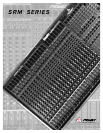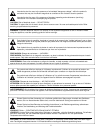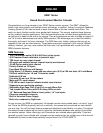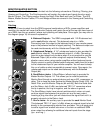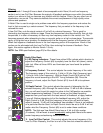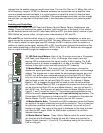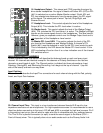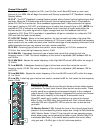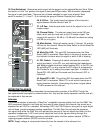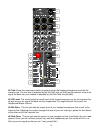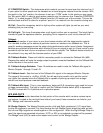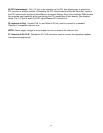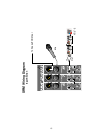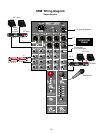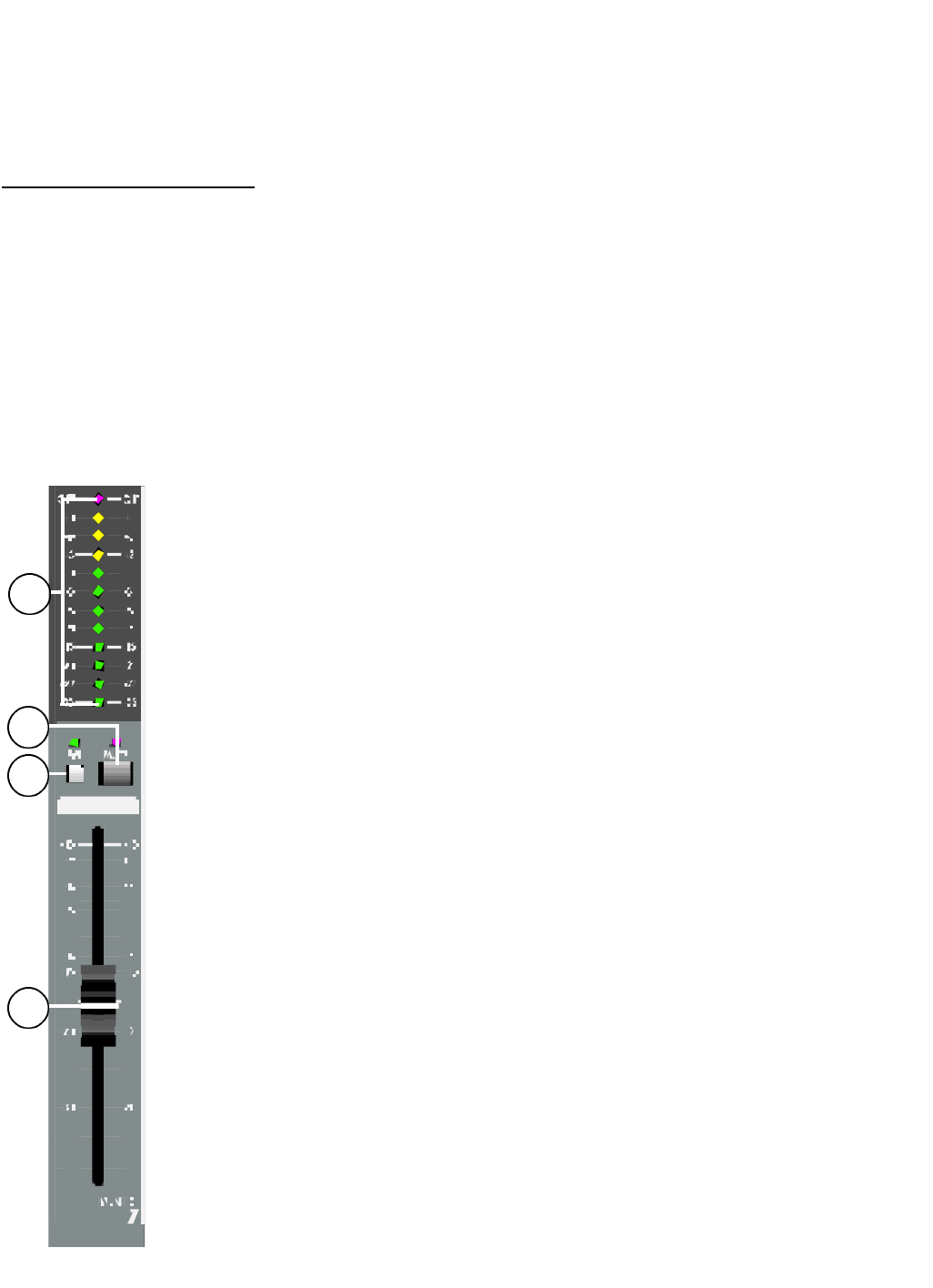
adjusted into the audible range you would never know. The Low Cut Filter is a 12 dB/oct filter with a
roll-off frequency range of 10-350 Hz. Because extremely low frequencies use up amplifier head-
room and cause resonant feed-back, it is a good practice to adjust this control to allow the least
amount of low frequency energy that is tolerable. If the passive stage sound does not offer enough
low-end then you may want to drop back some. It then becomes an issue of your personal prefer-
ence.
Listening and Controlling
This section will explain the LED Peak Level Meters, Monitor Master Faders, Headphones, and
Wedge. These are located at the middle to bottom, right-hand portion of the board. In this section
you will become familiar with the AFL (after-fader-listen) and PFL (pre-fader-listen) functions of your
SRM. Before we venture further, let’s get a clear understanding of AFL and PFL.
AFL and PFL are functions which allow you to listen in, via wedge or headphones, on what your
signal sounds like at various points within the SRM. The major difference in the two functions is that
PFL is used to check the input signal post-EQ, whereas the AFL is used to check the outputs. In
addition to listening to the signal, selecting AFL or PFL functions also changes the operation of the
level meters presenting a visual level reference. NOTE: If the AFL or PFL buttons are not engaged
then no output is heard through the headphones or wedge.
12. LED Peak Level Meters: Each of the 12 monitor mixes has a 12 segment
LED Peak Level Meter with a -33 to +9 dB range. Each meter has a clip
warning LED to indicate when the signal is within 2 dB of clipping. The 0 dB
reference level of all meters corresponds to +4 dBu at its output. The R Meter
(furthest to the right) is also used with priority for PFL metering.
13. Master Monitor AFL: This switch and LED combination connects the
monitor mix signal (post-fader) to the AFL mix, the headphones, and the wedge
outputs. The outputs work in pairs where the odd-numbered outputs go to the
Left AFL mix and the even-numbered outputs go to the Right AFL mix. When
only one of the two adjacent outputs is used the occupied output’s signal can
then be found on both the Left and Right AFL mixes. For instance, if Master
Monitor 1 AFL is engaged its signal can be found on both the Left and Right
AFL mixes. If Master Monitor 2 AFL is engaged at the same time then its signal
can be found at the Right AFL mix and Master Monitor 1 can only be found in
the Left AFL mix. This scenario will work the same for Master Monitors 3 and 4,
5 and 6, 7 and 8, as well as 9 and 10. This provides great capabilities for the
SRM to be used in stereo monitoring and in-ear monitoring applications. The
Yellow status LED illuminates to indicate that AFL is activated on that particular
Monitor Master. The PFL function has priority over the AFL function.
14. Master Monitor Mute: This switch and LED combination mutes the Monitor
mix signal to the output, effectively turning off the monitor(s). This is a great tool
to have when problems arise since you can, selectively, turn on/off any or all
monitors on stage. The muting of the signal is displayed on the meter but does
not affect the AFL signal. When the Mute button is pressed, the red Mute
Indicator illuminates.
15. Master Monitor Faders: These 100mm Faders control the overall monitor
mix level found at the Monitor Outputs (#4 and #5). Faders are provided for
Monitor Output channels 1-10 and L/R. The reference setting for this control is
0 dB or unity gain.
7
12
13
15
14



